Spectacular and Artistic: "I Work on Each Creation for a Year"
Tiny, densely packed letters create the stunning works of art by Rabbi Ben Zion Bar Ami. Where did he learn his craft? Which creation took three years to make? And what secrets did he learn from his father?
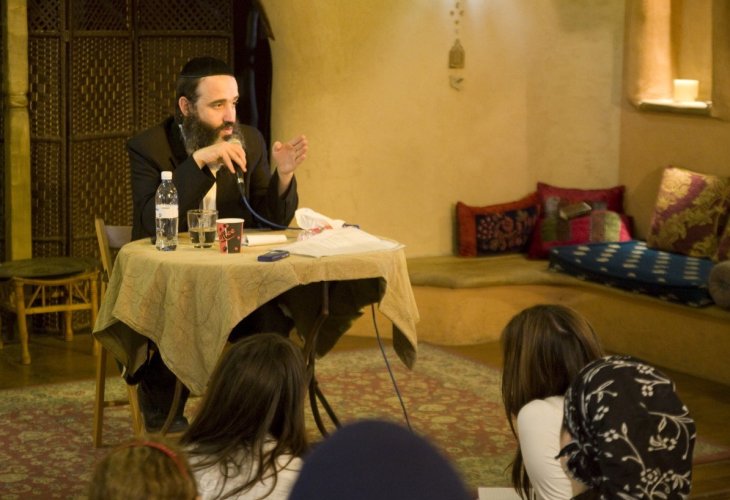 (In the circle: The artist Rabbi Ben Zion Bar Ami)
(In the circle: The artist Rabbi Ben Zion Bar Ami)Letters. What do they symbolize for you? What do they convey to you? For Rabbi Ben Zion Bar Ami, letters are far beyond anything imaginable, as they create his numerous artworks; artworks composed solely of letters, tiny-tiny ones, joined together to form amazing pictures.
"I come from a Yemeni family," he shares about himself, "In our family, there's a tradition spanning generations of scribes for at least 600 uninterrupted years. When my father immigrated to Israel from Yemen, he brought with him ancient books with very old inscriptions, written by our family. These are crumbling, yellowed pages, beautifully calligraphed. We guard them very carefully.
"The books my father brought to Israel contain different creations made of letters, among them books adorned with extremely tiny handwriting. My father used to write on wheat grains. He would sharpen a quill and inscribe on one grain: 'A land of wheat and barley.' He also wrote on eggs. He had a special craft for making ink, and he would sharpen the quill until it was as thin as a needle. The first times I also tried my hand at this skill was when I was asked to create tiny mezuzahs. I would write the passages in tiny writing and that’s how I connected to the skill and the art."
Rabbi Bar Ami was born in Israel, but in his childhood years, he continued to be educated in the Yemeni tradition. "When I was a child, and my father taught me to read, he always whispered in my ears that these holy language letters have secrets and meanings. He led me to see that the Aleph, for example, is composed of the letter Yud and another Yud connected together. Yud is Jew, and it's also Hashem's name, and together, the letters create love. Father used to say: 'The letters are not built from lines but from spiritual drawings.' That's how he would sit and tell me about each and every letter for hours."
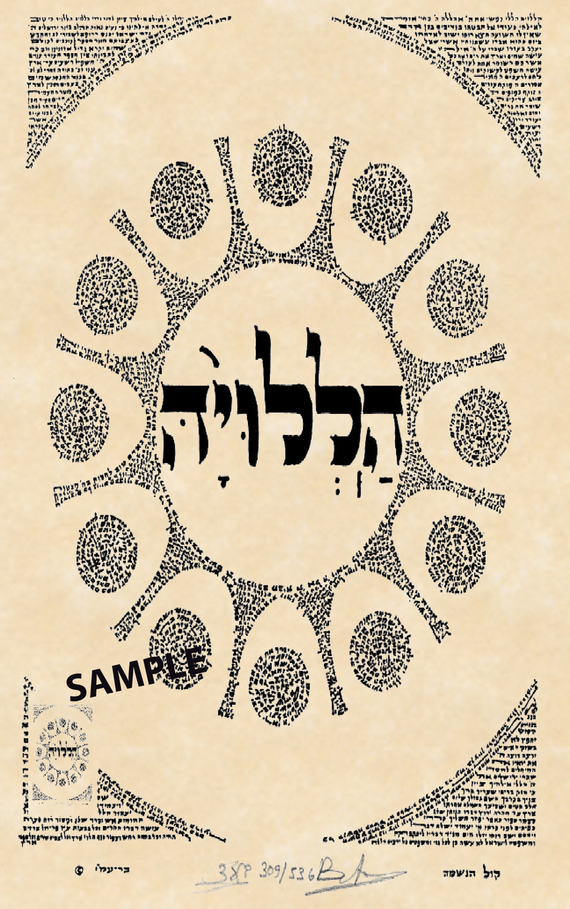 Happiness and Joy
Happiness and JoyThanks to the 'Mori'
Today, when Rabbi Bar Ami visits universities and museums worldwide to deliver his lectures, he's frequently asked about his art and why he paints with letters. "In response, I talk about my childhood years, then, at the age of three or four, I learned with the 'Mori' – the Yemeni teacher. We six or eight small children sat around one table, with only one book before us. The Mori was very strict; he would place a stone under our chins, and if anyone moved his head and the stone fell, it was clear he wasn't looking at the book, and he'd get whipped on the back. For me, the stone fell only once, I tasted the lash and realized it's not worth it. Thus, for years, I was a good and diligent student studying from the book. When the book was in front of me, I saw letters moving right to left, but when it was with the child next to me, I saw letters moving left to right, and when the book was with someone else, I saw them descending, ascending, and climbing. I enjoyed constantly following after the letters and their movements, feeling as if I was floating with them. Even then, letters became alive and moving for me. You can see in my creations that I don't use at all ordinary lines. For me, a line is somewhat a thing that's dead."
The decision not to plant any 'ordinary' lines in the drawings poses a special challenge for him. "The hardest thing is to draw the characters' eyes. Because the eyes express the human face. It's very difficult to create them solely from letters. Other artists in the field add lines, but I feel lines are dead things. I cannot place in my work something that's dead. Therefore, I can work for weeks to create the eyes correctly, using only letters."
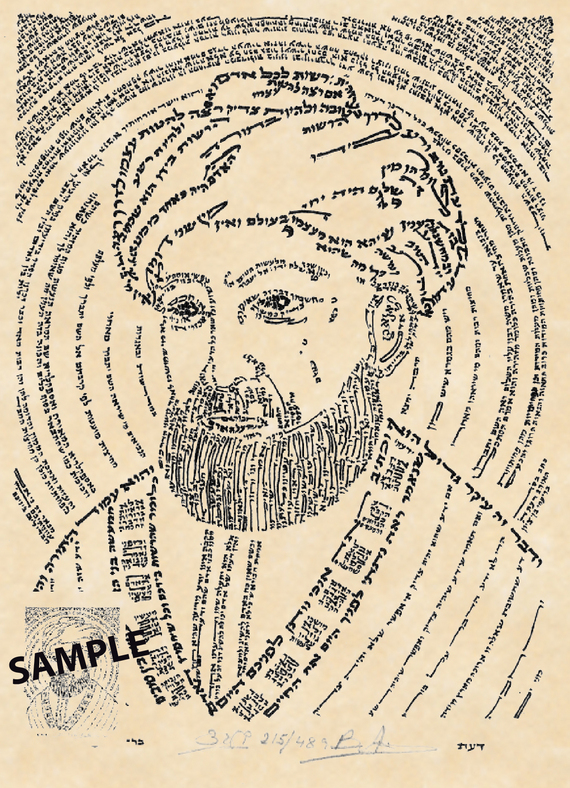 Da'at
Da'atCreations with Meaning
For the past decades, Rabbi Bar Ami has been almost constantly engaged in his unique art, but it wasn't always that way. "Until I was forty, I was a scribe. I wrote Torah scrolls, tefillin, and mezuzahs. After fifteen years of work in the field, I approached my teacher and mentor and told him: 'I've decided to stop being a scribe.' When he asked why I replied honestly: 'It's very difficult. You have to work with extreme caution and have very restricting laws. It's hard for me to work all the time knowing that if I make a small mistake, I might cause a Jew to walk around for years with invalid tefillin. It's frightening.' The Rabbi's response was: 'And precisely because of this we need you in the field. We're looking for scribes like you who are scared.' This sentence drove me to continue writing for another five years. Later, I felt my creativity yearning to burst out, so I almost entirely left the sacred writings and started to engage in art."
 Chafetz Chaim
Chafetz ChaimAnd in the work you're engaged in now, you have no fears?
"Surely, even in my artistic creations, there are fears, boundaries, and limitations. For example – I never draw animals, only a bird, because it expresses the Divine Presence. I also do not draw the lower parts of the body, only the face, up to the waist. I'm also limited in coloring the creations. I don't color them because the letters come from the sacred world, and just as we don't find colored tefillin or mezuzahs, it’s also inconceivable that I would color my creations."
How do you decide what drawing to create from the letters?
Rabbi Bar Ami smiles when he explains that behind each creation, there are many intentions. "For example, I created 'Song of Songs' in a way that looks like two interconnected circles. I intentionally wrote the verses from left to right, not right to left, that is – counterclockwise, to express that while the whole world goes one way, the Jewish people go the opposite. I was inspired by two clocks located on a palace in Prague – one shows Roman numerals and the other Hebrew letters. The Hebrew clock moves right to left, against the flow. In the verse where it says 'the one my soul loves,' I reached the heart of the circle. This wasn't easy, because those reading word by word will see I neither skip nor jump. There is a full plan here – how to start at a particular place, continue inwards, and finish exactly in the center, without skipping a single letter. Many sketches preceded this creation, at least a hundred. There are also other deep explanations around this creation, which I chose to name 'Eternal Seal.'
"In another creation I made, I wrote 'Song of Songs' in a shape of a cup. You can see the blank space on the page on both sides of the cup forms a profile of two figures looking at each other, as it says 'and their faces toward one another,' which expresses perfection. On the other hand, the 'Ethics of the Fathers' I chose to write in straight lines, saying 'What is a straight path a person should choose?'
"There's a creation I love very much. It includes four passages of the 'Shema Yisrael,' along with a special prayer said before putting on tefillin. I chose to create it in the form of a man whose entire body shines during his connection with Hashem. If you look closely at the head tefillin, you can see the letter 'H' engraved on the head tefillin – 'so all the peoples of the earth will see that the name of Hashem is called upon you, and they shall fear you.'"
One of Rabbi Bar Ami's most famous works was created under the guidance of the Lubavitcher Rebbe, of blessed memory. "I had very strong ties with the Rebbe, I sat in front of him as he directed me on how to create a work that would help couples who didn’t yet have children. The Rebbe guided me on how exactly to create it, and for years it has been distributed for free to anyone who wishes. One of the Rebbe's conditions before the guidance was that I would not earn a single penny from it."
 Merit
Merit"These Are My Children"
How long do you work on each creation?
Rabbi Bar Ami answers simply: "I don't remember a creation that demanded less than a year of work. But it's not that I'm two hundred years old... I simply work on several creations simultaneously."
But if a year of work seems a lot to you, Rabbi Bar Ami surprises when he tells about a creation that took three years to complete: "I made a very special creation made of the letters 'Am Yisrael Chai.' I created it after the Six-Day War. The feeling among the people was one of unusual unity; many returned to faith, were strengthened, who understood that hope must never be lost. Spontaneously, I just sat and began to create. In this unique creation, there are six broken Magen David symbols representing the Holocaust, along with many other elements with deep meaning. I wrote thirty pages of explanation about it. It was also my first creation."
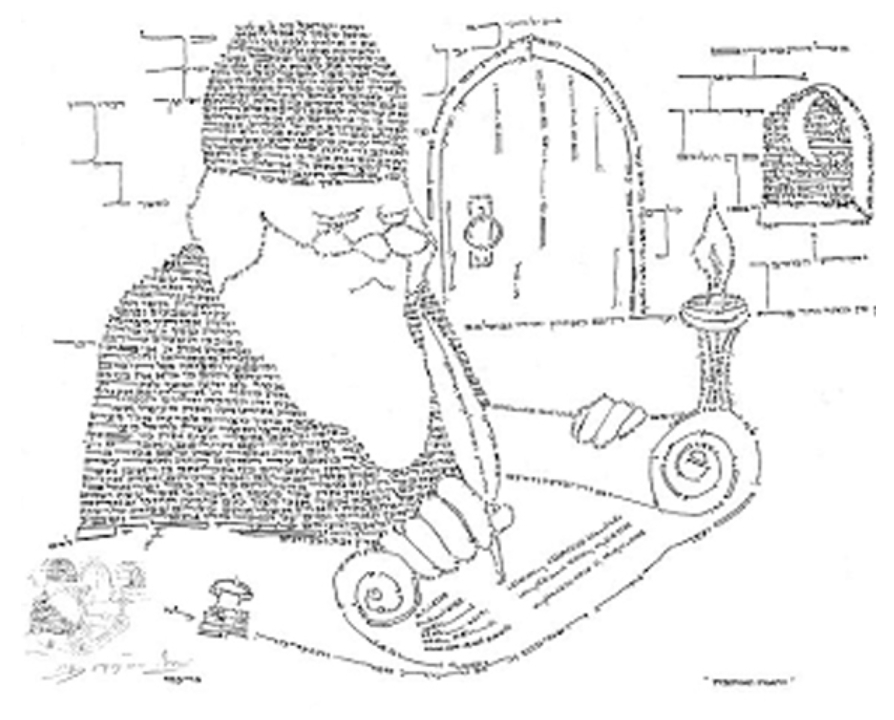 Love Hashem
Love HashemRabbi Bar Ami is no longer young, yet he continues to create tirelessly. He lives in Rechovot, and the city's mayor chose to give him a permanent room in the city's museum, where he exhibits some of his works.
Copies of his numerous creations can be seen sold worldwide. "These are copies, not the original works," he emphasizes, "which is why the price isn't expensive at all. But I don’t sell the original itself, even if I would starve, I wouldn’t sell it. The letters are like my children, and have you ever seen someone sell their children?"
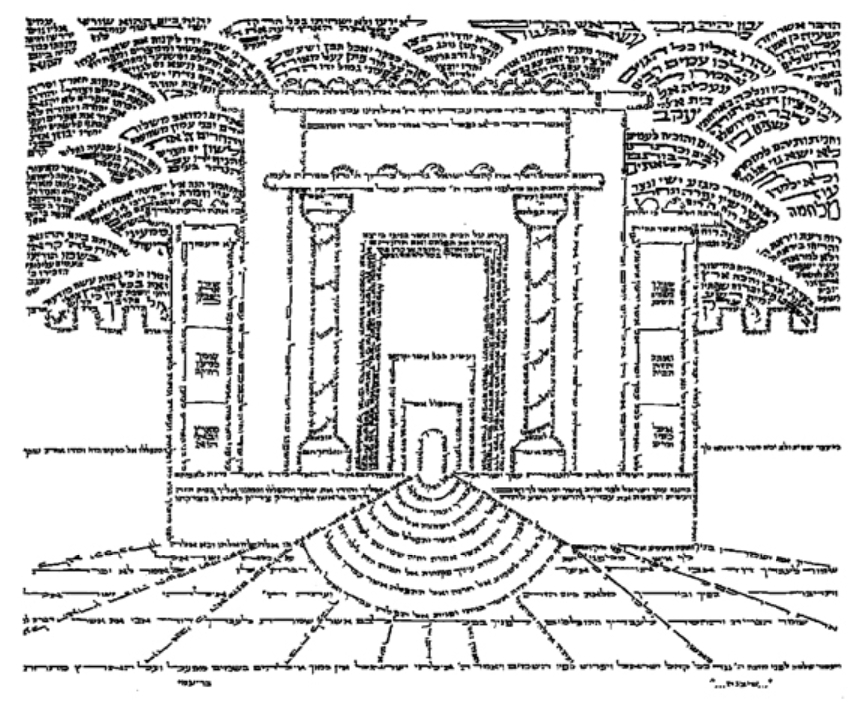 Temple Mount
Temple Mount Bless My Soul
Bless My Soul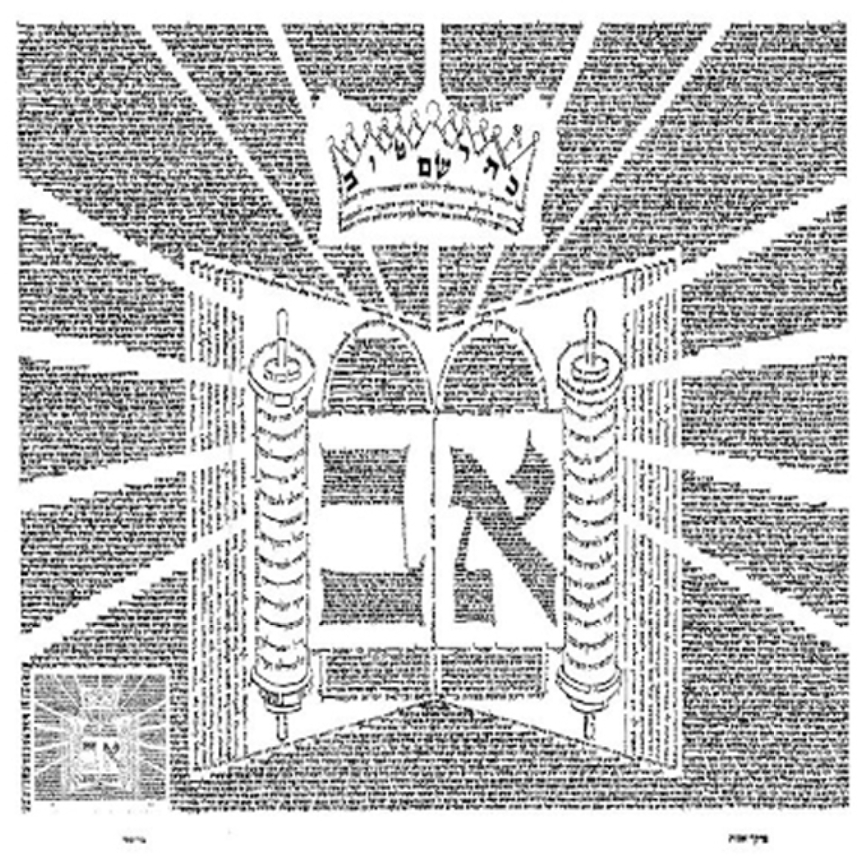 Love Your Neighbor as Yourself
Love Your Neighbor as Yourself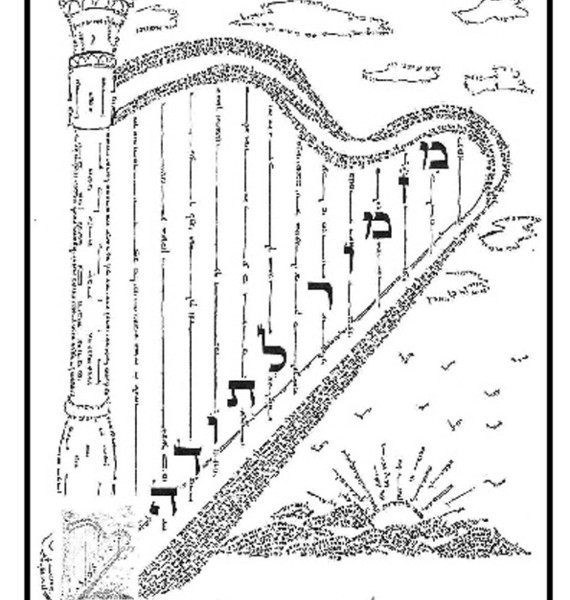 It is Good to Thank
It is Good to Thank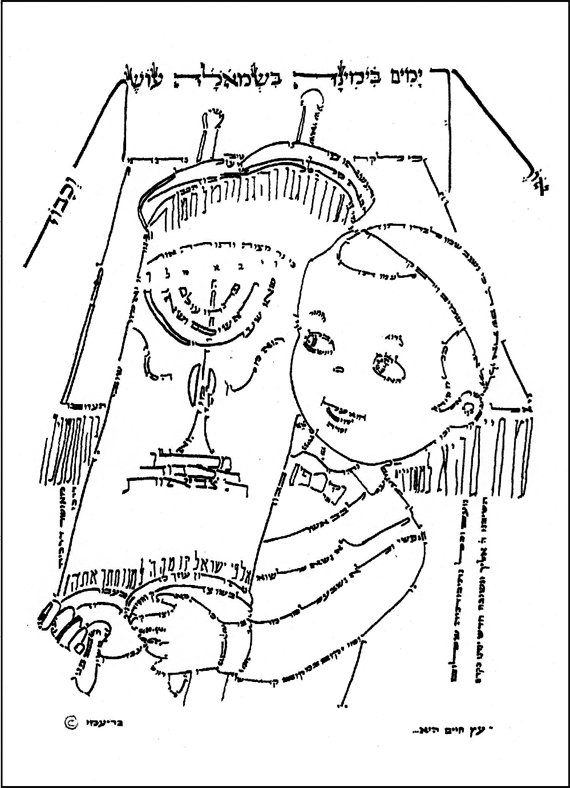 Happy Child
Happy Child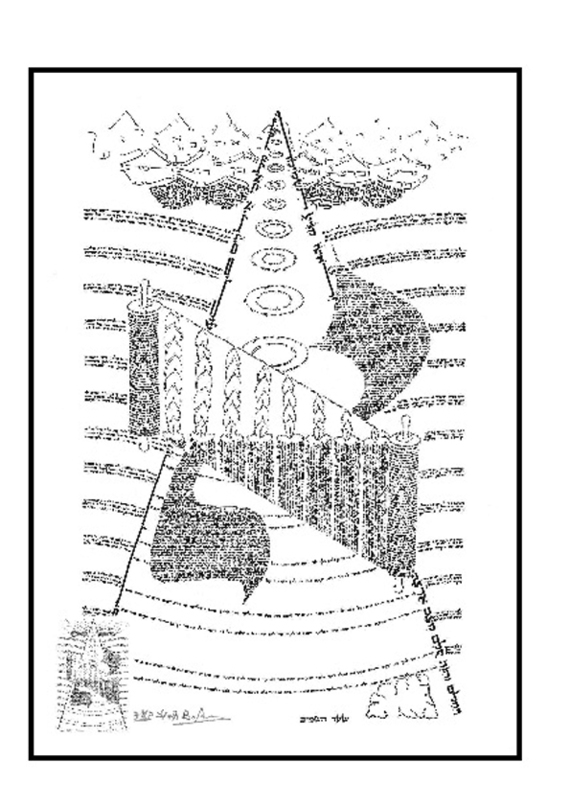 Gates of Heaven
Gates of Heaven
